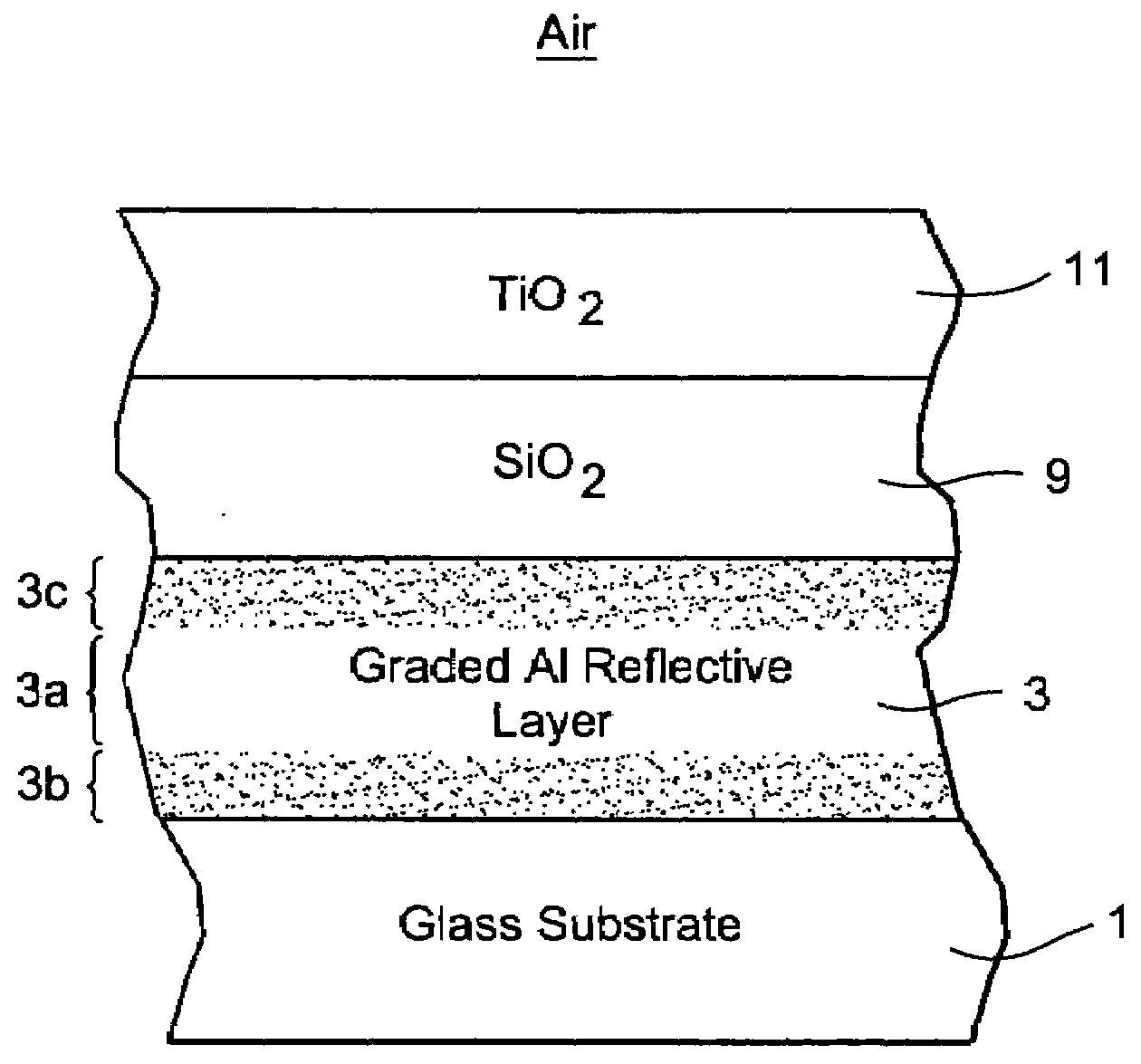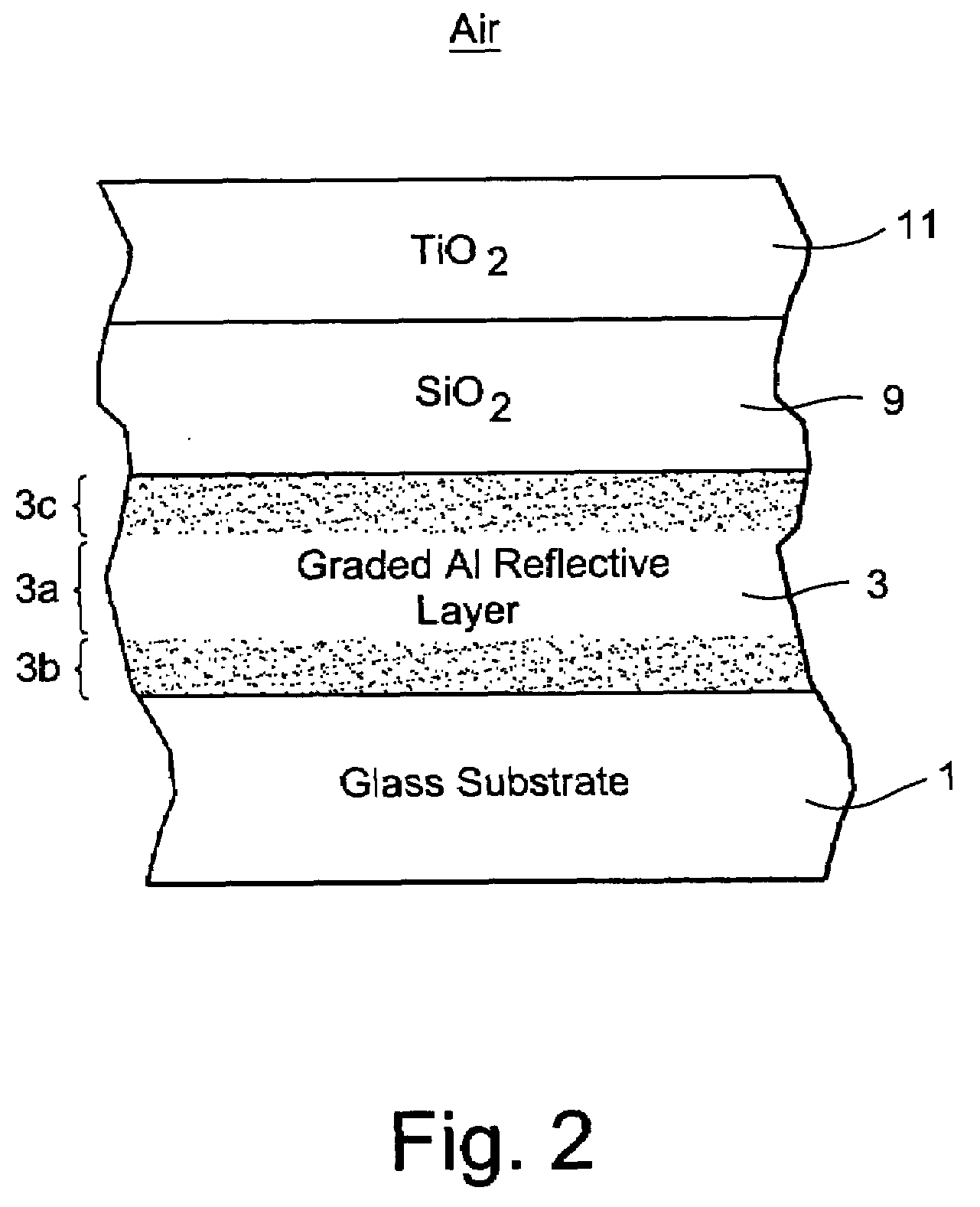Method of making first surface mirror with oxide graded reflecting layer structure
a technology of oxide graded reflecting layer and surface mirror, which is applied in the direction of instruments, optical elements, vacuum evaporation coating, etc., can solve the problems of affecting the reflectivity in an undesirable manner, the coating typically used in this regard is not very durable, and the reflection is not perfect, so as to improve durability and manufacturability, the effect of improving the durability of the mirror
- Summary
- Abstract
- Description
- Claims
- Application Information
AI Technical Summary
Benefits of technology
Problems solved by technology
Method used
Image
Examples
Embodiment Construction
[0024]The instant invention relates to a mirror that may be used in the context of projection televisions (PTVs), copiers, scanners, bar code readers, overhead projectors, and / or any other suitable applications. In certain embodiments, the mirror is a first surface (FSM) including a reflecting layer comprising a visible light reflecting material such as aluminum (Al). At least part of the reflecting layer is oxide graded, continuously or discontinuously, progressively or non-progressively, so that the reflecting layer is more oxided at one or both sides thereof than at a central portion thereof which may or may not be oxided. In other words, the reflecting layer is more metallic at a central portion thereof, and more oxided at the top and / or bottom portion(s) thereof. The reflective layer (e.g., using as the visible light reflecting material Al, Cr, Ni, Cu, mixtures thereof, and / or the like) may be covered by at least one dielectric layer(s) such as SiO2 and / or TiO2, although other ...
PUM
| Property | Measurement | Unit |
|---|---|---|
| Fraction | aaaaa | aaaaa |
| Fraction | aaaaa | aaaaa |
| Nanoscale particle size | aaaaa | aaaaa |
Abstract
Description
Claims
Application Information
 Login to View More
Login to View More - R&D
- Intellectual Property
- Life Sciences
- Materials
- Tech Scout
- Unparalleled Data Quality
- Higher Quality Content
- 60% Fewer Hallucinations
Browse by: Latest US Patents, China's latest patents, Technical Efficacy Thesaurus, Application Domain, Technology Topic, Popular Technical Reports.
© 2025 PatSnap. All rights reserved.Legal|Privacy policy|Modern Slavery Act Transparency Statement|Sitemap|About US| Contact US: help@patsnap.com



